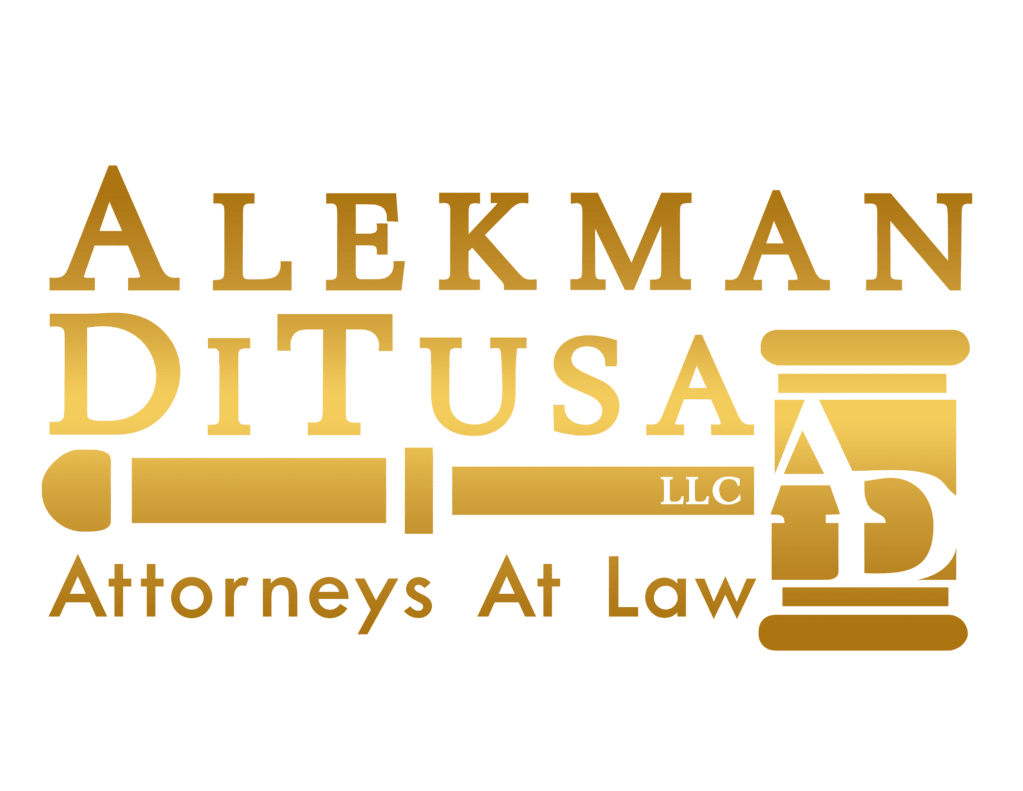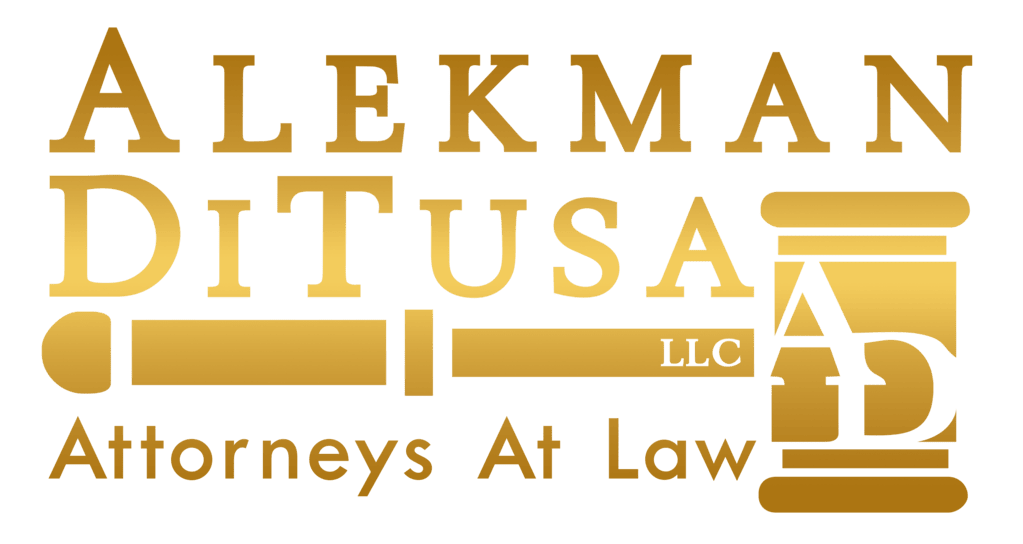The judge thanks the members of the jury for their service and sends them on their way. Second ago, the jury came back with a plaintiff’s verdict. A verdict that was triple the amount of the last offer from the insurance company. Your client is ecstatic. You feel vindicated. You’ve been telling the adjuster for the past eighteen months that the case was worth a lot more than he was offering. In response, you’ve been forced to listen to a slew of excuses:
- I am reducing the medical bills because they are too high;
- Your client has health insurance, so the out-of-pockets aren’t really what you are claiming they are (who really cares about the collateral source rule in Massachusetts?);
- We are only accepting two times the Medicare rates – everything else is just the medical provider overbilling;
- We’re only accepting sixteen weeks of treatment, because that’s all it should have taken for your client to recover;
- No I don’t have a doctor that says that, that’s just my opinion as to how long a person treats following an accident;
- I know this evidence wouldn’t be allowed at trial but we aren’t at trial, we are negotiating.
. . . and the list goes on and on. Thankfully, instead of wasting your time arguing about how ridiculous these arguments are, you filed suit and sent a G.L. c. 93A/176D demand letter.
Fast-forward one week. The euphoria of a jury trial victory is still lingering (does it ever really go away?). But now you are faced with the task of proceeding with the 93A claim and proving the insurer was acting unfairly throughout the entire handling of your client’s claim. So how do you begin?
First, if you typically file the bodily injury claim and the 93A/176D claim together, you will need to file the appropriate motions. In most cases, prior to obtaining an execution for the underlying judgment, the Court will require you to file a Motion to Issue Separate and Final Judgment pursuant to Massachusetts Civil Procedure Rule 54(b). To succeed on such a Motion, you must demonstrate “(1) the action involves multiple claims or parties; (2) a final adjudication as to at least one, but fewer than all, of the claims or parties; (3) an express finding that there is no just reason for delay […] until the remainder of the case is resolved; and (4) an express direction for entry of judgment.”[1] Concerning the third element, no just reason for delay, courts typically look at a number of factors, including (1) the relationship between the adjudicated and unadjudicated claims; (2) the possibility that the need for review might or might not be mooted by future developments in the district court; (3) the possibility that the reviewing court might be obliged to consider the same issue a second time; the presence or absence of a claim or counterclaim which could result in set-off against the judgment sought to be made final; and (5) miscellaneous factors such as delay, economic and solvency considerations, shortening the time of trial, frivolity of competing claims, and expenses. This Motion is typically not opposed by the insured or insurer, as post-judgment interest is running.
You will also be required to File a Motion to Remove Stay. This is a simple Motion stating that the removal of stay is appropriate because the litigation against the insured has been resolved. This Motion is, again, typically assented to by counsel for the insurer.
After filing the above motions, you will likely be brought in for a status conference. More and more, courts are attempting to convince parties to forego discovery and set a quick trial date. Do not, under any circumstances, agree to forego discovery. It is the best way to learn what was going on behind the scenes, and it is the only way you will be able to gather enough evidence to prove the insurer’s violations were “willing and knowing” or intentional, therefore entitling you to multiple damages.[2] There is nothing wrong with setting a shortened discovery period, but you are shooting yourself in the foot if you agree to forego discovery.
Now that you are allowed to conduct discovery, what type of discovery should you send out? What information are you looking for? Just like in any type of civil case, you should not only be serving written discovery, but also conducting depositions.
Document Requests
Document Requests are perhaps the single most important piece of discovery that you can serve in a 93A claim. In the document request, you are seeking the complete claims file for your client’s claim. The claims file should include a complete copy of the insurer’s claims notes; any internal memorandum or emails between adjusters; notes of any phone calls; any expert reports they may have received (regardless of whether it was disclosed in the underlying tort claim); any and all evaluations conducted on the claim; and any correspondence (including e-mail) which in any way relates to your client. You should also request a copy of the insurer’s claims manuals which were in effect at the time your client’s claim was handled. The claims manual will show how the adjuster was supposed to handle the claim. If the adjuster did not follow internal policies and procedures, it may provide you with evidence that the adjuster did not conduct a reasonable investigation in violation of G.L. c. 176D (9)(b). If the insurer does not have a claims manual, then the insurer may also in violation of G.L. c. 176D.[3]
More likely than not, the insurer is not going to hand over all requested documents in the first go-round, and you will be required to send a discovery dispute letter. If documents are withheld or redacted, make sure you are provided a detailed privilege log as required under the Rules of Civil Procedure. This is more than just stating an objection based on attorney-client privilege or the work product doctrine. The defendant is required to identify the date of the document was created, the author, and the recipient.[4] A detailed privilege log is necessary to determine whether documents are properly being withheld.
Some common objections to producing discovery in 93A claims include:
-
Confidential and Proprietary in Nature: This is often seen when seeking a copy of the claims manual, or similar documents. The defense will likely request a protective or confidentiality order before producing these documents. However, judges are increasingly scrutinizing and rejecting claims that business information is subject to protection as “proprietary” or “confidential.” In seeking such protection, counsel must differentiate between information “that could have a seriously deleterious effect on the producing party’s business opportunities or secrets if it becomes available to the public” and information that is simply “embarrassing” or that the producing party fears may be used against it in other cases.[5]
And, while you may decide it is appropriate to enter into a confidentiality agreement, make sure you thoroughly review the Proposed Agreement before signing it. The Agreement should be limited to specific documents, and it should not shift the burden to the plaintiff to prove something is not confidential.
-
Work Product/Anticipation of Litigation: This is perhaps the most often used objection. Defendants will attempt to argue work product or anticipation of litigation to cut off the production of claims notes after a certain date (usually the date the 93A letter was sent). It may also be asserted in connection with letters or emails between adjusters, or to experts.In considering whether the objection is appropriate, remember the work product doctrine extends only to the work of counsel. In Hickman v. Taylor, the Supreme Court found that the work product doctrine functioned to “enhance the vitality of an adversary system of litigation by insulating counsel’s work from intrusions, inferences, or borrowing by other parties.[6] Adjustors, supervisors, and technical managers are not attorneys (even if they hold a law degree), and are therefore not entitled to the protection of the work product doctrine.
Moreover, the work product doctrine applies only to documents or tangible things prepared in anticipate of litigation by or for a party, or by or for a party’s representative.[7] The doctrine does not extend to materials assembled in the ordinary course of business, and the fact that a particular document may be useful in litigation at a later date does not necessarily mean it is protected by the work product doctrine.[8] When documents are “prepared in the ordinary line of business and duty, looking to gathering and beneficial use of information, it does not enjoy any protection under the Rule even if such reports might ultimately be useful to one or another party in case of future litigation.”[9] Even if the insurer could convince a Court that something such as the claims file to be considered work product, it should be viewed as fact work product (as opposed to opinion work product). Fact work product is obtainable if the moving party has a substantial need for it and cannot obtain the substantial equivalent without undue hardship.[10] “Bad-faith actions against an insurer can only be proved by showing exactly how the company processed the claim, how thoroughly it was consideredand why the company took the action it did.”[11] “[T]he need for the opinion work product of the insurance claims representatives in such cases is compelling, because the plaintiffs cannot reasonably prove that the defendant insurance companies willfully failed “to effectuate prompt, fair and equitable settlements of claims in which liability has become reasonably clear,” in violation of G.L. c. 176D, § 3, without showing that the insurance claim representatives recognized during the underlying litigation that liability was clear and the injuries severe, and yet still failed to present a prompt and fair settlement offer.”[12] As such, “in all but the rarest cases the plaintiffs would have a substantial need for the fact work product and could not obtain the substantial equivalent from other sources.”[13] Simply put, the claims files show exactly how the insurer processed the claim at the time it was processed, and there would be no other way for you obtain the substantial equivalent of those documents.
-
Attorney Client Privilege and the Defense of Advice of Counsel: Many times, the insurer will withhold or redact communications between adjusters and the attorneys representing the insured. Courts have typically held that this is appropriate. However, if the defense to the 93A claim is that the insurer relied on the advice of counsel, then the attorney-client privilege is waived.[14] If the insurer is relying on advice of counsel, you should also take the deposition of the attorney for the insured.
-
Only producing documents through the date Plaintiff served the 93A demand: You should be fighting for all non-privileged material up until the stay of the 93A claim was lifted. Counsel will likely cite to Sanchez v. Witham for its position that is does not need to produce documents after the 93A letter was sent.[15] However, if you agreed to sever and stay the 93A claim during the litigation of the tort claim, Sanchez is easily distinguishable. In Sanchez, the 93A/176D claim was not bifurcated from the underlying tort claim, and the production of documents would likely disclose work product that could be beneficial to the tort claim. If the Court did not allow the Defendant’s Motion to Severe and Stay, and you are litigating both the tort claim and the 93A claim simultaneously, you are likely not entitled to any documents after the 93A letter was sent.
Interrogatories
In propounding Interrogatories, you are merely seeking to confirm certain information. You are trying to identify any employee of the insurer who handled your client’s claim. This way you can ensure you subpoena the correct witnesses to trial. You also want to identify each and every settlement offer made by the insurer; when they were made; whether the case was valued higher than the offer given; and if so, why was a full value offer never communicated; and the amount of any demands. This information can then be confirmed through the 30(b)(6) deposition.
Keeper of Records Subpoenas
If defense counsel for the insured for the underlying tort claim was not staff counsel for the insurer, you may also want to consider sending out a Keeper of Records Subpoena for counsel’s entire file. This can be a gold mine of information, especially if the tort defense counsel documented their belief that the insurer was undervaluing the claim. Counsel may object to producing the information based on attorney work product. While it is true that this may be opinion work product, you may be able to make a “highly demonstrative showing” as to why the opinion work product is needed.[16] Specifically, if counsel for the insured is instructed the insurer to settle for a higher amount than what was offered, or if counsel advised the insurer that they were unreasonably exposing the insured to an excess judgment. This could be direct evidence of a 93A violation. If defense counsel was also staff counsel, the documents and information are likely protected by the attorney-client privilege.
Depositions
After making sure you receive all of the appropriate documents and interrogatory answers, you should also schedule a 30(b)(6) deposition. While this may seem duplicative since you are already in possession of the claims notes, the deposition will help lock down the corporate position. The deposition is also necessary to make sure you understand what is actually being conveyed. Each insurance company operates in a slightly different way. Certain key terms may mean different things to different insurers. For example, a “reserve” could be the absolute worst case scenario, or it could be what the insurer expects to ultimately pay on the claim. Some insurance companies set a minimum reserve, no matter the value of the claim. You won’t know this until you take the deposition. The depositions will also allow you to confirm that the insurer was in the possession of all necessary documents at the time that the offers were made. Finally, you can use the depositions to set the foundation for the introduction of documents pursuant to G.L. c. 233 §79j later on at trial.
Admissions
You may want to consider sending a detailed set of admissions. They should not be served until after you have had a chance to review the claims notes and deposition transcripts. These admissions will likely mirror your “Findings of Fact” that you file during the trial. The admissions should seek to confirm facts that reiterate findings in the claims notes and testimony from the adjuster. Admissions can also be used to authenticate documents that you want to introduce at trial.
Findings of Fact and Conclusions of Law
Findings of Fact and Conclusions of Law are not part of the discovery process. Rather, they are documents submitted after the actual trial (some judges require these submissions in advance). Importantly, while it may seem like a burden to draft Findings of Facts and Conclusions of Law prior to the trial, this exercise will actually help you organize your case (and thoughts) into an easy checklist of testimony and evidence you want to place on the record. The Findings of Fact should be a detailed overview of what you expect the evidence to show as to how the underlying claim was handled; the actions the insurer took (or did not take); and how those actions violated G.L. c. 93A and/or 176D. Ideally, the Court will reference your Findings when authoring the 93A decision. Similarly, Conclusions of Law will give the Court an overview of the specific statues and case law that applies to the facts of your case. Again, you want to apply the facts of your case to the applicable law in a way that the court can easily identify the issues and determine whether the insurer’s actions were conducted in bad faith. If, during the trial, additional facts come out (as they typically always do), request an opportunity to supplement the Findings of Facts and Conclusions of Law to conform to the evidence presented.
Once you have submitted your Findings of acts and Conclusions of Law, you will have to think about the best approach to the trying the actual 93A claim. Alas, that is a topic for another day.
________________________________
[1] Long v. Wickett, 50 Mass.App.Ct. 380, 386 (2000).
[2] See M.G.L. c. 93A §3, Rhodes v. AIG Domestic Claims, Inc., 416 Mass. 486, 495,499 (2012).
[3] See M.G.L. c. 176D, § 3 (9) (c) (stating that “[f]ailing to adopt and implement reasonable standards for the prompt investigation of claims arising under insurance policies” is an unfair claims settlement practice).
[4] MRCP 26(b)(5).
[5] 49 Mass. Prac., Discovery § 3:9 (citing Labbe v. Home Depot USA, Inc., 22 Mass. L. Rptr. 310, 2007 WL 1074114 (Mass. Super. Ct. 2007)(MacDonald, J.) (rejecting claim by Home Depot that its internal safety standards were “proprietary”); G & F Industries, Inc. v. Jeffco, Inc., 20 Mass. L. Rptr. 479, 2006 WL 306893 (Mass. Super. Ct. 2006) (Agnes, J.) (rejecting request for confidential treatment of “loss prevention” reports that had been prepared by an insurance company as the insurer for the plaintiff in the case); Virgin Entertainment Group, Inc. v. MSKC Newbury, LLC, 2006 WL 463948 (Mass. Super. Ct. 2006).
[6] 329 US 495 (1947).
[7] Colonial Gas Co. v. Aetna Casualty & Surety Co., 144 F.R.D. 600, 604-5 (D. Mass. 1992).
[8] See, Shotwell v. Winthrop Community Hosp., 26 Mass. App. Ct. 1014 (1988).
[9]Rhodes, 20 Mass.L.Rptr *3 (quoting Shotwell v. Winthrop Comm. Hosp., 26, Mass. App. Ct. 1014, 1016 (1988)).
[10] MRCP 26(b)(3).
[11] Rhodes v. AIG Domestic Claims, Inc., 20 Mass.L.Rptr. 491, *5 (quoting Yurick v. Liberty Mutual Insurance Co.).
[12] Rhodes v. AIG Domestic Claims, Inc., No. CIV.A. 05-1360-BLS2, 2006 WL 307911, at *5-6 (Mass. Super. Jan. 27, 2006). See also, See Holmgren, 976 F.2d at 577 (“In a bad faith insurance claim settlement case, the ‘strategy, mental impressions and opinion of [the insurer’s] agents concerning the handling of the claim are directly at issue’ “ and the plaintiff’s need for the documents “was compelling”), quoting Reavis v. Metropolitan Property & Liability Ins. Co., 117 F.R.D. 160, 164 (S.D.Cal.1987); Hartman v. Banks, 164 F.R.D. 167, 170 (E.D.Pa.1995) (“The claims file is a unique, contemporaneously prepared history of the company’s handling of the claim; in an action such as this [bad faith] the need for the information in the file is not only substantial but overwhelming.”), quoting Brown v. Superior Court, 137 Ariz. 327, 670 P.2d 725, 734 (Ariz.1983).
[13] Rhodes, supra.
[14] Rhodes v. AIG Domestic Claims, Inc., et al. 20 Mass. L. Rptr. 491, (Gants, J., 2016)(opining that “if the insurance company sought to present an advice of counsel defense, then tit would need to waive its attorney-client privilege as to that advice.”); Darius v. Boston, 433 Mass. 274, 277-78, n.7 (2001).
[15] 2003 Mass.App.Div. (Northern District)(upholding lower court’s imposed limitation of production of documents up until the time the 93A letter was sent).
[16] Ace America Ins. Co. v. Riles Bros., Inc., 30 Mass.L.Rptr. 116 (2012).



